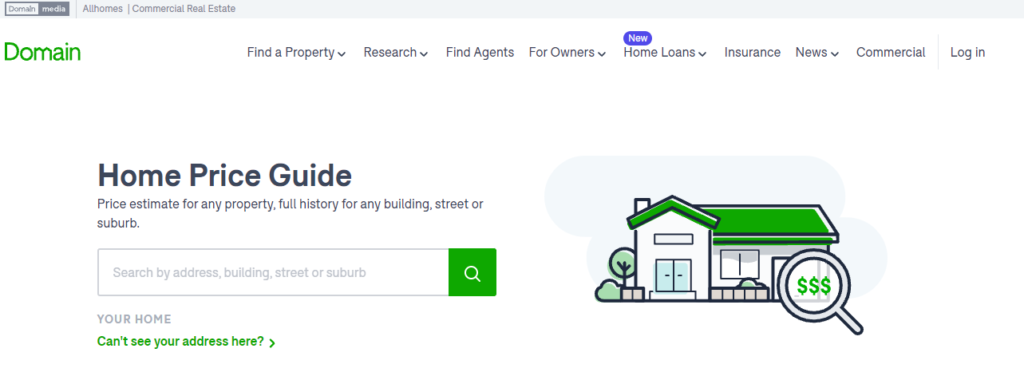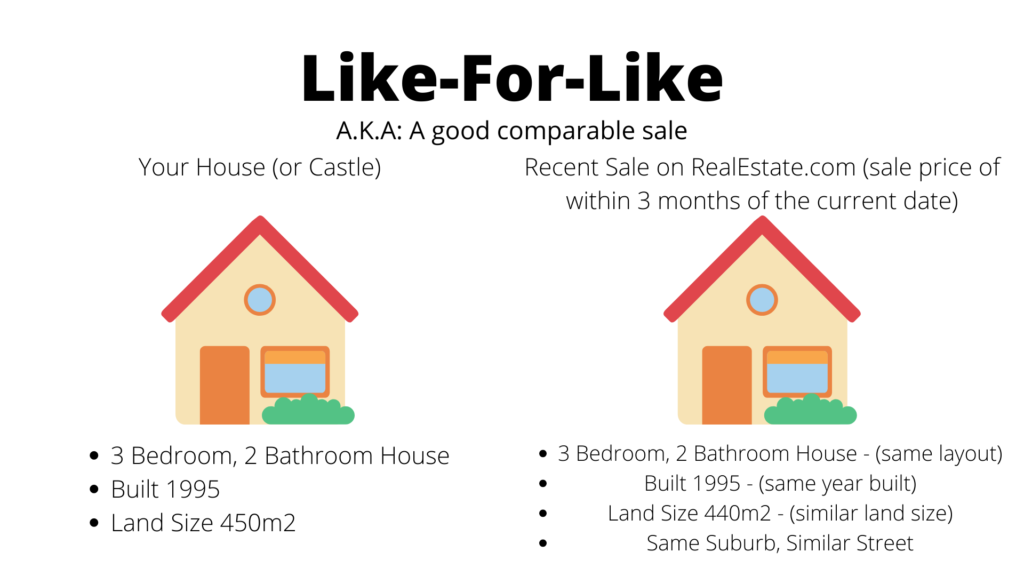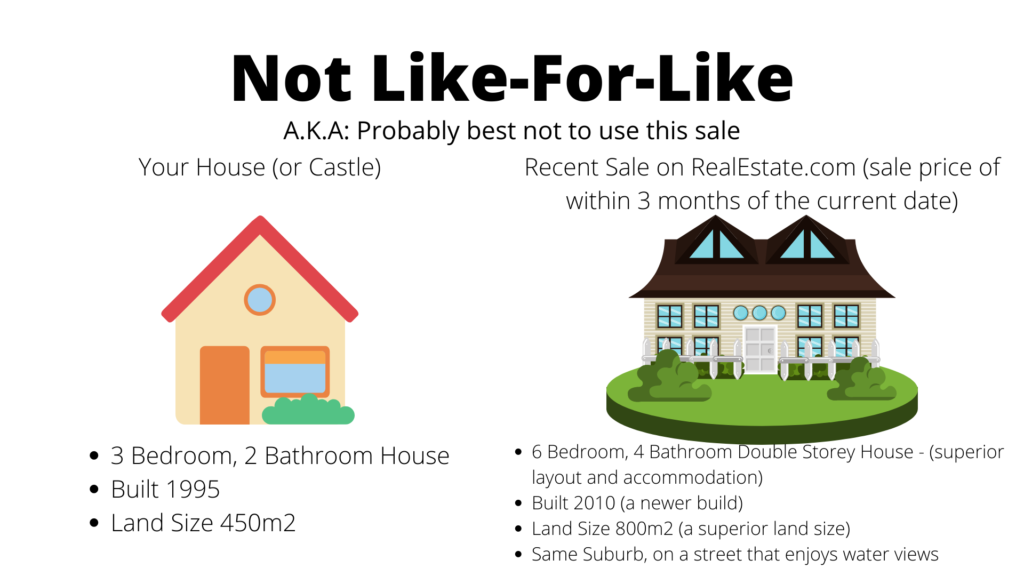How much is my house worth? It is a question asked by many Australians. This article explores resources and insights to help you to find out the value of your property. Valuations is a nuanced process and while we would always recommend a Valuation Report completed by a Certified Practicing Valuer for specific purposes, I firmly believe that you can also do your own investigations into a house’s worth. In this article, I will highlight some tools which can help you with finding out your property’s worth. Though before we begin, I would like to add a disclaimer: This is not an exhaustive list, nor do we recommend that these tools be used alone.
Alright! Let’s take a look at some of these tools.
Home Price Guides (Home Price Estimates)

Domain Property Profile Home Price Guide – Price Estimate
Real EstateView – Property 360 – Price Estimator
RealEstate.com.au – Property Value
Home price guides are just that – they provide a rough guide, though one which is based upon utilising data (taken from various sources) to determine a value range and an estimated property value. The main problem with these is that they can (and often) utilise data that may be incorrect or outdated and they do not go into the finer details of your property. This could be where you can start, though I would strongly advise against solely relying on this source for your house’s worth. Valuers do not use this tool as a reliable source.
Real Estate Websites

Real Estate – Research Sold Properties
Domain – Search Australia’s Home of Property
Allhomes – Search Property and Past Sales Information (Useful for ACT sales)
Homely – Australian Real Estate Search
Real Estate websites and more specifically, the “Sold” section of these sites provide useful tools for looking at recent sales in the area of choice. Price guides or indicated prices in the “Buy” section of these sites are less reliable since they may be either overstated or understated to their true value. As valuers, we would look at details such as the land size, floor/building areas, street appeal, condition, finishes and fittings, location and weigh these up against other similar properties using a ‘like-for-like’ approach.
Spatial Information Mapping Tools
RP Data Professional – A Subscription Based Product
ACTMapi– For the Australian Capital Territory
VicPlan – For Victoria
SixMaps– For New South Wales
QLD Globe– For Queensland
https://maps.thelist.tas.gov.au/listmap/app/list/map – For Tasmania
https://location.sa.gov.au/viewer/ – For South Australia
Landgate – For Western Australia
NRMaps– For Northern Territory
There are other tools which are useful for helping to find out further information about your property. These are called Spatial Information Mapping tools. These can give you information such as land size, block details, contours, shape and measurement tools to work out distance and building areas.
When it Comes to Comparing Properties, What’s Not to Like-For-Like?
Let’s look at a couple of examples when comparing property.
Example 1: A “like-for-like” comparison:

Example 2: A comparison that is not “like-for-like”:

It is usually best to obtain a sample size of between 3-5 “like-for-like” sales to provide a good indication of what your house is worth. A “Like-for-like” sale means a property that has a similar land size, accommodation, floor area, age, condition, location amongst other characteristics.
Recent Sales Are What You need
Another factor includes considering the date of the sale. Especially when a market is fast moving, the more recent the comparison is, the better it is when working out the value. So usually, I would recommend using properties that have sold within the last 3 months; or better yet, a sale that sold the day before.
So going back to Example 1, let’s say that you have found 3 sales of 3 bedroom houses on RealEstate.com.au to compare with your 3 bedroom house:
| Comparable sale | Sale Price |
| Sale 1 – 3 bedrooms 2 bathrooms Built 1994 Land size 460m2 | $600,000 |
| Sale 2 – 3 bedrooms 2 bathrooms Built 1990 Land size 430m2 | $550,000 |
| Sale 3 – 3 bedrooms 2 bathrooms Built 1995 Land size 450m2 | $575,000 |
So here we have a range of between $550,000 – $600,000 with a middle sale of $575,000. The first thing to point out is that this is your range – which may or may not be similar to a “Price Guide”. However, it must be noted that this is a far more accurate way of looking at your house worth since you are looking into detail the characteristics of the properties and comparing and contrasting these sales to come up with a reasonable and fair market value. This will provide you with a closer estimate on your house worth.
To Sum Up
When it comes to finding your house’s worth, it is important to use the most accurate information; good recent comparable sales, data and tools that provide further insights to the characteristics of the property. Though it may take more work than to simply plug in your address with some details to have an instant figure; and if you can do the above with good comparable sales; you would have a better idea on your house’s true worth. The list above is not an exhaustive list of the tools; there are also other metrics such as market trends, median values, construction costs, zoning details, economic conditions both on a global and local scale. At the end of the day, if you need further guidance or require a valuation report for a particular purpose, experts such as independent property valuers can help you find out the true value of your property.
At Vanguard Valuations, we strive to provide the best service and independent advice when it comes to valuations. We conduct valuation services all around Australia for most independent purposes.
Call or live chat with us today to discuss your next property valuation report with one of our Certified Practicing Valuers!

